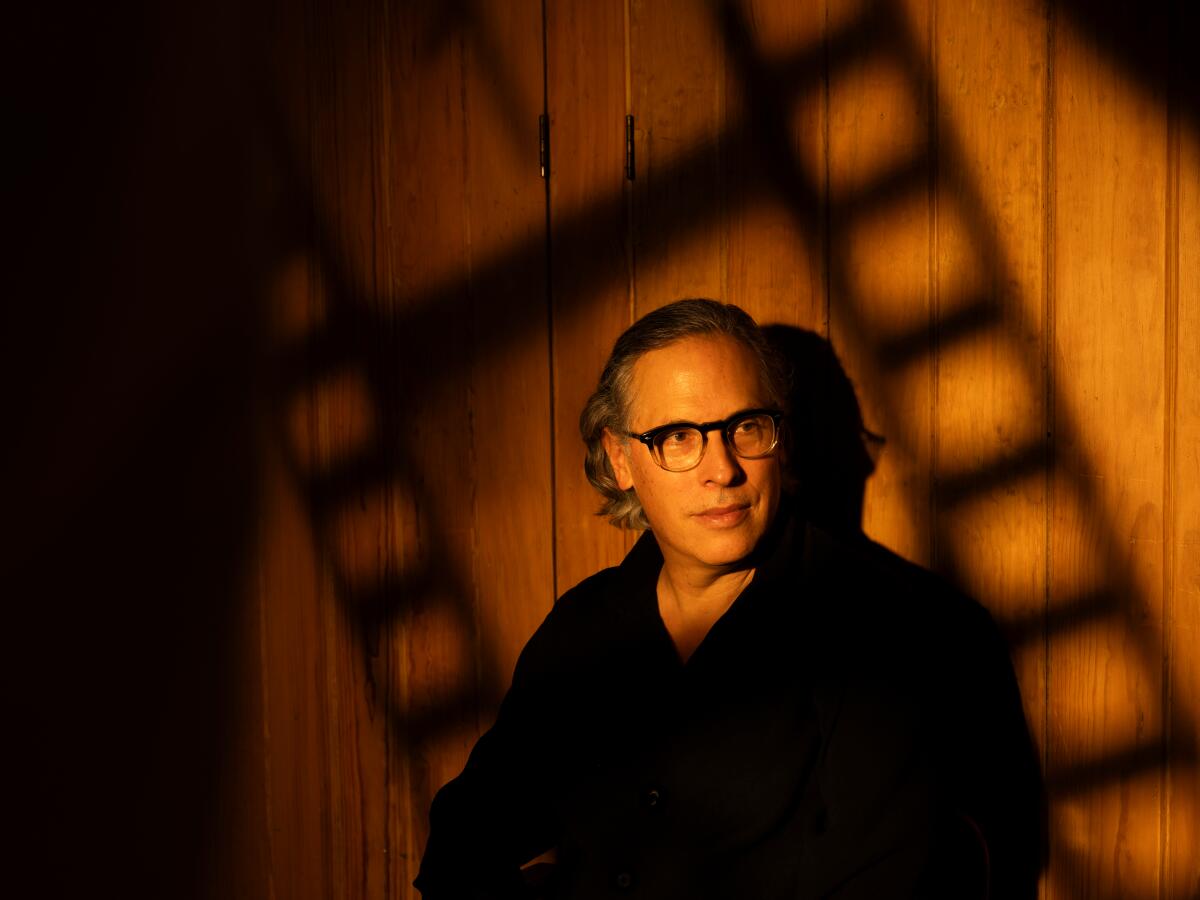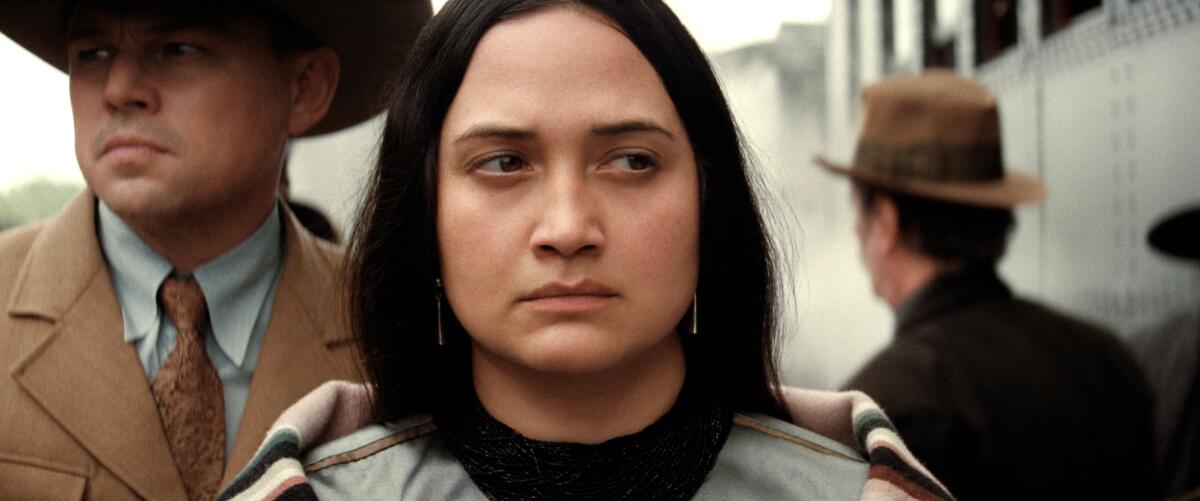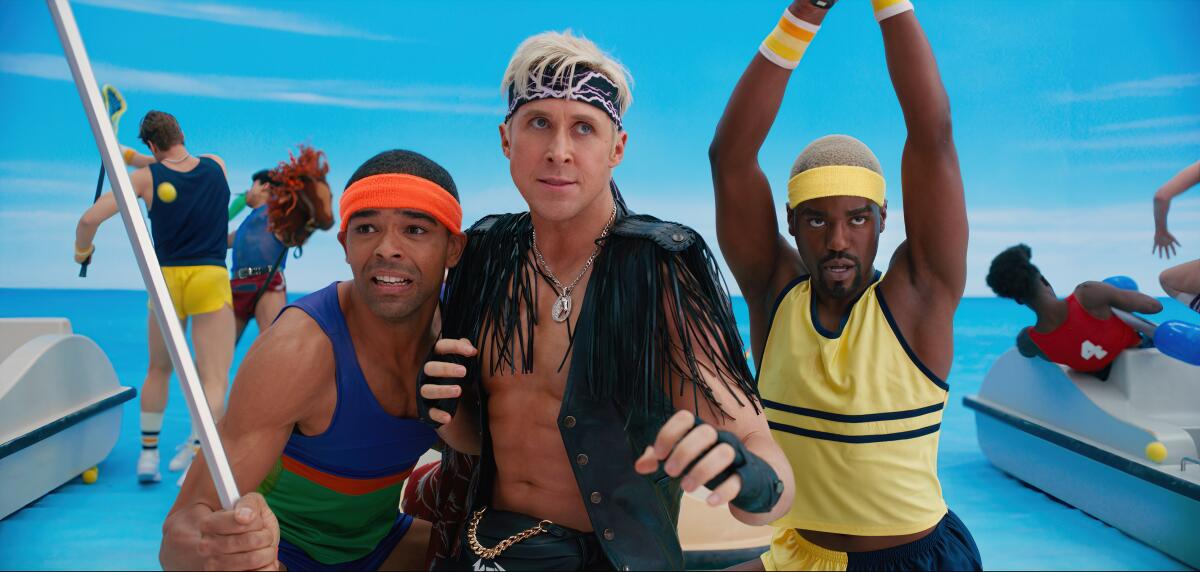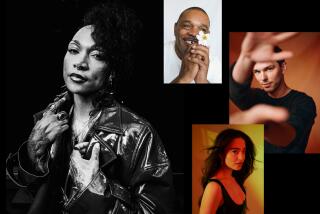The eye of this beholder is quite keen. Cinematographer Rodrigo Prieto on his two films

- Share via
The two films could scarcely look more different.
One, “Killers of the Flower Moon,” mixes a muted autochrome look with naturalistic lighting to conjure a mood of impending doom. The other, “Barbie,” is a color-blasted feast of pastels that celebrates artifice in creating a world inhabited by toy people. You would never think they were shot by the same person. Except that person, Rodrigo Prieto, is one of the most versatile and prolific cinematographers around. And while the film academy singled out only his work on Martin Scorsese’s “Flower Moon” on nominations morning, The Envelope wants to give both sides of his creative vision applause.
The Mexico City native, 58, is now a four-time Oscar nominee, previously for “Brokeback Mountain” (2005), “Silence” (2016) and “The Irishman” (2019) — the latter two also directed by Scorsese.
Here Prieto talks a little about his approach to each film.
“I generally try to strive for the sort of thing where the camera and the lighting and everything about the cinematography is expressive of an inner feeling,” he says of his process in a recent video interview from his Los Angeles home. Here he details two scenes each from the films, offering insights into what he was trying to achieve and how he went about getting there.
‘Killers of the Flower Moon’
Scene 1: Mollie (Lily Gladstone) and her husband, Ernest (Leonardo DiCaprio), arrive at the train station to meet a private detective hired to investigate the deaths of Mollie’s Osage family and friends. We hear her thoughts in a voice-over — “This evil around my heart comes out of my eyes” — and see what she sees, a sea of white faces that seem to rise out of the train steam like demons in subtle slow motion.

“We attempted to do this scene by actually putting Lily on the same dolly as the camera and have her be precisely attached to it, but it felt a little too strange, a little too contrived,” Prieto says. “But we wanted it to be strange and not completely realistic. That’s why there’s all the steam. We had all sorts of tubes with smoke effects and steam effects choreographed very precisely. We also shot it at an off-speed, 36 frames per second, maybe 48. I don’t quite remember. But that also gives it a little bit of that surreal feeling. Everybody’s looking directly at the lens, at her point of view, all white people. It puts us, as the audience, into what she might be feeling as the one Osage person in the scene.”
Scene 2: William Hale (Robert De Niro), the orchestrator of the Osage murders, takes Ernest to a Masonic lodge for a little discipline. Ernest has been getting sloppy and William decides physical punishment is in order. The setting, a real-life lodge in Fairfax, Okla., is sparsely lit, and shot in such a way as to enhance its cavernous, ominous feel.
“That place is full of bad energy,” Prieto says. “We used wide-angle lenses to give the sensation that Ernest is dwarfed by his uncle. It creates the feeling that Ernest is vulnerable. I didn’t really have many opportunities for lighting. There were no windows in this place. It only had these two skylights that have since been covered with cement. So there was just about one foot of space between the cement roof and these squares of glass. I lit it from there with some LED lights. I slid them in some gaps, and added some diffusion to give it a little bit of an amber color. That gives it a sort of ‘Godfather’-like feeling, with top light that then bounces off of this black-and-white patterned floor. So that’s what’s lighting the faces.”
‘Barbie’
Scene 1: It’s morning in Barbie Land as Greta Gerwig’s film begins, before the existential fall into human-like imperfection. We see Barbie (Margot Robbie) rise and shine in an overhead shot, wave to her fellow Barbies and head out for another artificially sunny day.
“Greta and I wanted it to feel like opening a box and discovering a Barbie, or a toy, or a Dream House,” Prieto says. “So to me that meant the camera should be wide, frontal, let’s say innocent or unsophisticated. Every camera movement is tracking precisely with the characters. Everything is very mechanical. When she comes down the slide and then she gets off the slide, the camera pulls back with her on a straight line, and then she changes direction and the camera very precisely changes direction with her. The other notion was that it’s always sunny in Barbie Land. So we used very big lighting units to create sun, which is pretty freaky.”

Scene 2: The climactic Rumble of the Kens, which morphs into a grand Vincente Minnelli-style dance sequence. Toy horses, beach balls and the question of whether one can ever be Kenough.
“The battle scene was very much inspired by ‘Saving Private Ryan,’ because it’s a beach landing,” Prieto says. “That’s one of the only scenes that doesn’t have sunlight, because we want it to feel kind of overcast, give it a little bit of that wartime feel. Then we actually shot the dance sequence on the same stage. We took out the whole set and put in this new floor that had these very graphic lines on it, pink on one side and blue on the other, and steps, all very much inspired by ‘Singin’ in the Rain.’ I lit it as an abstract version of the beach. I put up a big 200,000-watt light to create this feeling of the sun, and that’s what created the shadows of all the dancers on the floor, which I think is very beautiful.”
More to Read
From the Oscars to the Emmys.
Get the Envelope newsletter for exclusive awards season coverage, behind-the-scenes stories from the Envelope podcast and columnist Glenn Whipp’s must-read analysis.
You may occasionally receive promotional content from the Los Angeles Times.









